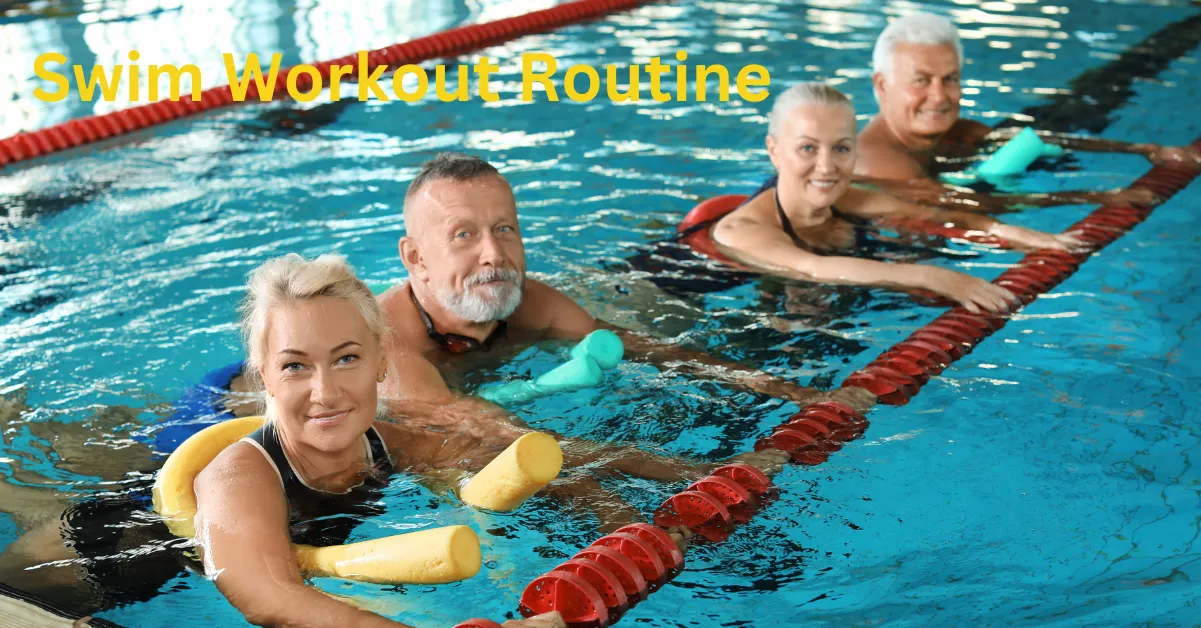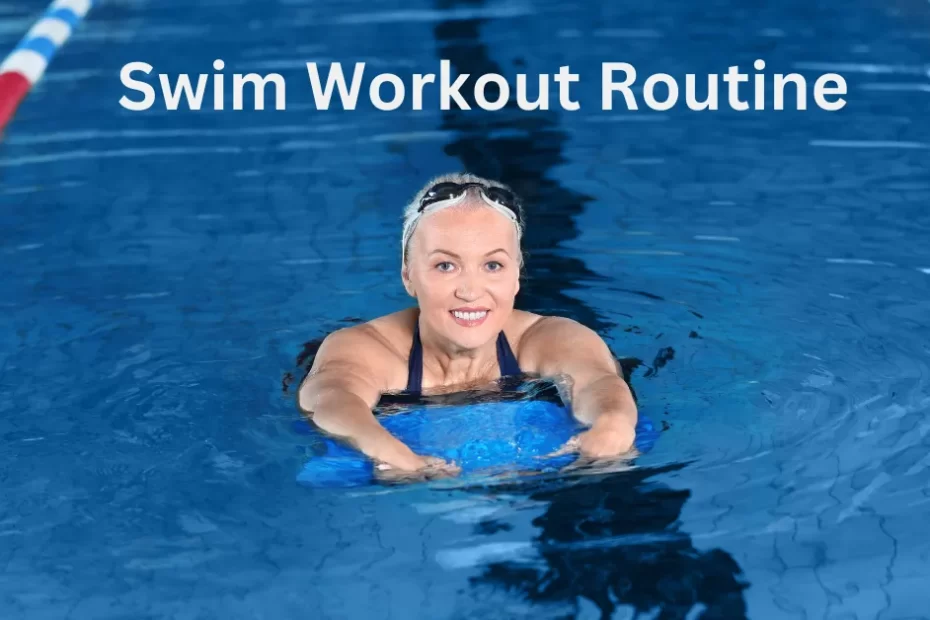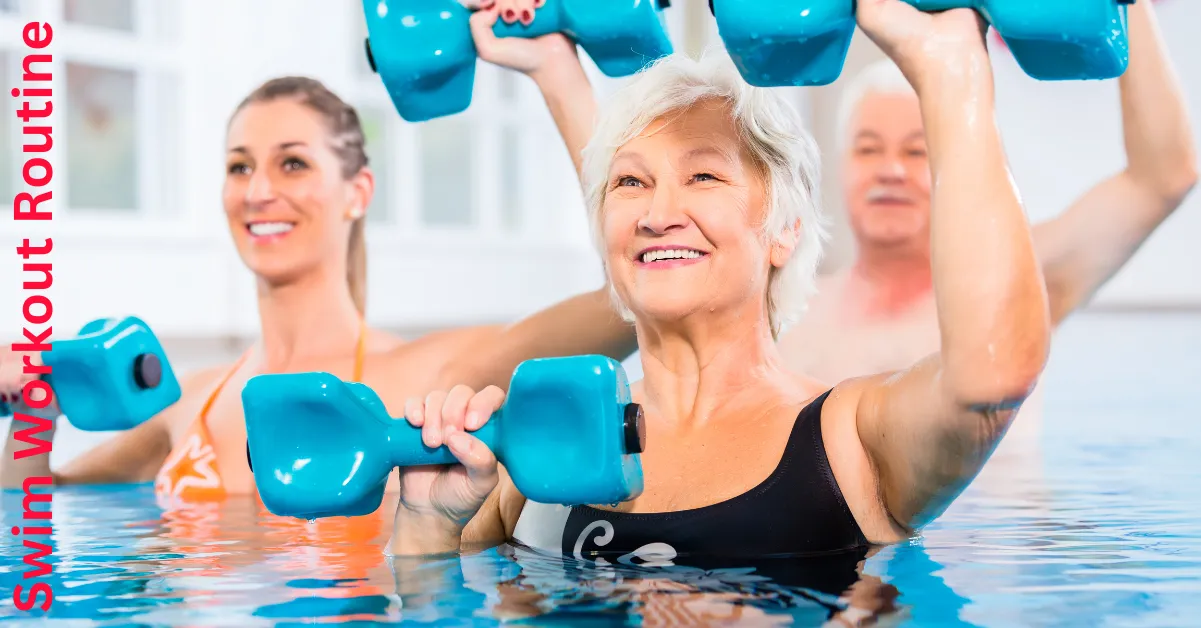Swim Workout Routines For Seniors: Aging is inevitable, but that doesn’t mean you have to give up on staying active and healthy. Swimming is a low-impact and effective way for seniors to exercise and improve their physical and mental well-being.
But where do you start when it comes to creating a swim workout plan as a senior? Don’t worry, I’ve got you covered. In this article, I will provide a comprehensive swim workout plan for seniors to help them stay fit and enjoy the benefits of swimming.
Whether you’re a beginner or an experienced swimmer, this workout plan will help you improve your strength, flexibility, and cardiovascular health while minimizing the risk of injury. So let’s dive in!
- Swim Workout Routines For Seniors
- Can swimming alone help me achieve my weight loss goals?
- Q1: Can swimming alone be an effective form of exercise for weight loss?
- Q2: How many calories can I burn swimming for weight loss?
- Q3: What are the benefits of swimming for weight loss compared to other forms of exercise?
- Q4: How often should I swim to see results in weight loss?
- Q5: Are there any specific swim workouts or techniques I should focus on for weight loss?
Swim Workout Routines For Seniors
Creating a swim workout routine for seniors involves considering several factors such as their current fitness level, any existing health conditions, and their comfort and skill level in the water. Here’s a basic plan that can be adjusted as needed:
Begin with a gentle swim or water walking to gradually warm up the body and prepare for the workout ahead.
Aerobic Exercise (20-30 minutes): Engage in continuous swimming laps or water aerobics exercises to elevate the heart rate and sustain the intensity for a prolonged period. This promotes cardiovascular health and endurance.
Strength Training (10-15 minutes): Utilize water weights or resistance tools to perform strength training exercises, targeting different muscle groups. Examples include leg kicks, arm curls, and other movements that utilize the resistance of the water for added challenge and strength building.
Flexibility and Balance (10-15 minutes): Incorporate exercises that enhance flexibility and improve balance. This may involve leg lifts, standing water yoga poses, gentle stretching movements, or other flexibility-focused activities.
Cool Down (5-10 minutes): Conclude the workout with a slow swim or walk to gradually reduce the intensity and allow the body to recover. This promotes proper cooldown and helps to lower the heart rate.
In addition to the swim workout routine, seniors can also benefit from other aquatic exercises:
Water Walking: Water walking in the shallow end of the pool is an excellent low-impact exercise for seniors. By lifting their knees high and swinging their arms, seniors can gradually increase the intensity by walking faster or incorporating hand-held weights.
Water Aerobics: Water aerobics is a popular exercise choice for seniors due to its gentle impact on the joints and its ability to provide resistance training. Various exercises such as leg lifts, arm curls, and jumping jacks can be performed in the water. Pool noodles or resistance bands can also be used for added resistance.
Kicking Drills: Kickboards serve as useful tools for seniors to work on leg strength and balance. Holding onto the kickboard, seniors can alternate between flutter kicks and frog kicks, targeting different leg muscles.
Lap Swimming: For seniors who are confident swimmers, lap swimming offers an excellent opportunity to improve cardiovascular health and build endurance. Gradually increasing the intensity and distance over time will help seniors reap the benefits of this effective workout.
Remember, it’s important for seniors to start slow and gradually increase the intensity and duration of their workouts.

Stretching Movements Included In Swim Workout Routine
Standing water yoga poses and gentle stretching movements are exercises that can be done in the water to improve flexibility, balance, and strength. They are particularly beneficial for seniors as they are low-impact and the buoyancy of the water reduces stress on the joints. Here are a few examples:
Tree Pose: Stand on one leg, bend your other knee, and place the sole of your foot on the inside of the standing leg. Hold onto the side of the pool if needed for balance.
Warrior Pose: Stand with legs about hip-width apart, and turn one foot out 90 degrees and the other in slightly. Extend your arms out to the sides and gaze forward over your front hand. Bend your front knee to a 90-degree angle, keeping knee over ankle.
Water Tai Chi: Similar to traditional Tai Chi but performed in water, movements can include “pushing the wave”, “cloud hands”, and “lifting the ball”. These movements are performed slowly and deliberately, with a focus on breath control.
Leg Lifts: While holding onto the side of the pool, slowly lift one leg to the side or the front. Lower it back down and repeat with the other leg.
Arm and Shoulder Stretches: Extend your arms out to the sides or overhead and then slowly bring them back down. You can also try gently rolling your shoulders forward and backward.
Torso Twists: With your feet firmly planted on the floor of the pool, slowly twist your torso to one side and then to the other. Keep your movements smooth and controlled.
Swim Your Way To A Stronger, Healthier You
Swimming is not only a refreshing and enjoyable activity but also a powerful way to improve your overall strength and health. Whether you’re a beginner or an experienced swimmer, incorporating swimming into your fitness routine can yield remarkable results. Here’s why swimming is a fantastic exercise for achieving a stronger and healthier body:
Full-Body Workout: Swimming engages nearly all the major muscle groups in your body, providing a comprehensive workout. From your arms and shoulders to your core, back, and legs, every stroke and kick helps to strengthen and tone your muscles.
Low-Impact Exercise: Unlike many other forms of exercise, swimming is gentle on the joints due to the buoyancy of water. This makes it an ideal choice for individuals with joint pain, arthritis, or other conditions that restrict high-impact activities.
Cardiovascular Conditioning: Swimming is a fantastic cardiovascular exercise that elevates your heart rate, improving heart health and endurance. Regular swimming sessions can help lower blood pressure, increase lung capacity, and enhance overall cardiovascular fitness.
Weight Management: Swimming is an effective calorie-burning activity that can aid in weight management. The resistance of the water combined with continuous movement helps to burn calories and improve metabolism, supporting healthy weight loss or maintenance.
Improved Flexibility: The stretching and reaching motions involved in swimming promote flexibility and joint mobility. As you perform various strokes and movements in the water, your muscles gradually lengthen, leading to increased flexibility and an improved range of motion.
Mental Well-being: Swimming is not only beneficial for physical fitness but also for mental health. The rhythmic nature of swimming, combined with the calming properties of water, can help reduce stress, improve mood, and promote relaxation.
Suitable for All Fitness Levels: Swimming is a versatile exercise that can be adapted to different fitness levels. Whether you’re a beginner or an advanced swimmer, you can adjust the intensity, duration, and strokes to suit your individual needs and goals.
To make the most of your swimming workouts, consider incorporating a variety of swimming styles such as freestyle, backstroke, breaststroke, and butterfly. Varying your strokes challenges different muscle groups and keeps your workouts engaging and exciting.
Remember to warm up before swimming and cool down afterward to prevent injury and aid in recovery. Additionally, always swim in a safe and supervised environment, and consult with a healthcare professional if you have any pre-existing medical conditions or concerns.
So, dive in and swim your way to a stronger, healthier you. Embrace the benefits of swimming and enjoy the incredible physical and mental rewards that come with this fantastic exercise.



Love your blog and swimiing
Thanks Donna